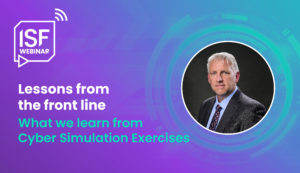How to design and deliver an effective cybersecurity exercise
Armed forces have always utilised war-gaming exercises for battlefield training to prepare for times of conflict. With today’s digital transformation, the same concept is being applied in the form of cybersecurity exercises – tests and simulations based on plausible cyber-attack scenarios and incident response.
Cyber exercises press an organization’s ability to detect, investigate, and respond to threats in a timely and secure manner. Well-designed cybersecurity exercises help organizations proactively identify and address vulnerabilities in their people, processes, and technology, mitigating the blow should a real-life incident occur.
Types of cybersecurity exercises
Cybersecurity exercises can assume various forms including:
1. Table-top simulations: Typically paper-based exercises, table-tops run without the use of live infrastructure or the requirement for a simulated environment. They can be performed in many different facilities, from specially designed war rooms to a large conference room.
2. Digital simulations: These are group exercises run in simulated or test environments, which can be more realistic than table-top simulations. However, fully simulating a cyber-attack can be challenging as organizations may lack the facilities, technologies and skills to simulate a cyber-attack internally.
3. Red and blue teaming: Red and blue teaming tests the organization’s ability to defend against a group of determined attackers. It involves two teams – red teams, a team that plays the role of the hacker, and blue teams, an internal team that plays the role of the defender.
4. Penetration testing: Penetration testing focuses on breaking into systems by exploiting technical vulnerabilities, rather than assessing the organization’s ability to defend itself.
5. Phishing exercises: Phishing exercises test employees’ ability to detect fraudulent communications (email, text, phone, web), social engineering attempts, and their ability to respond to successful attacks.



